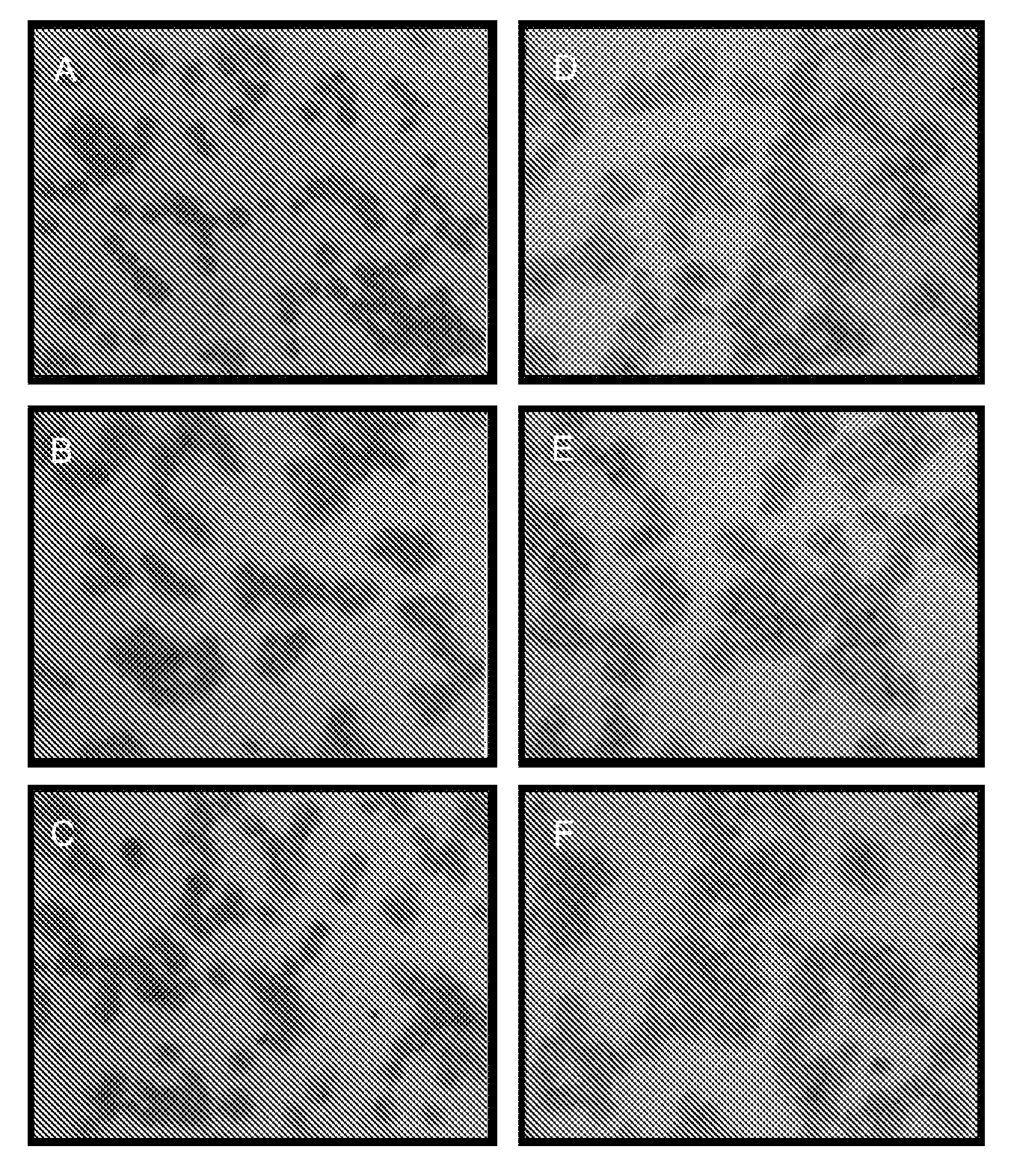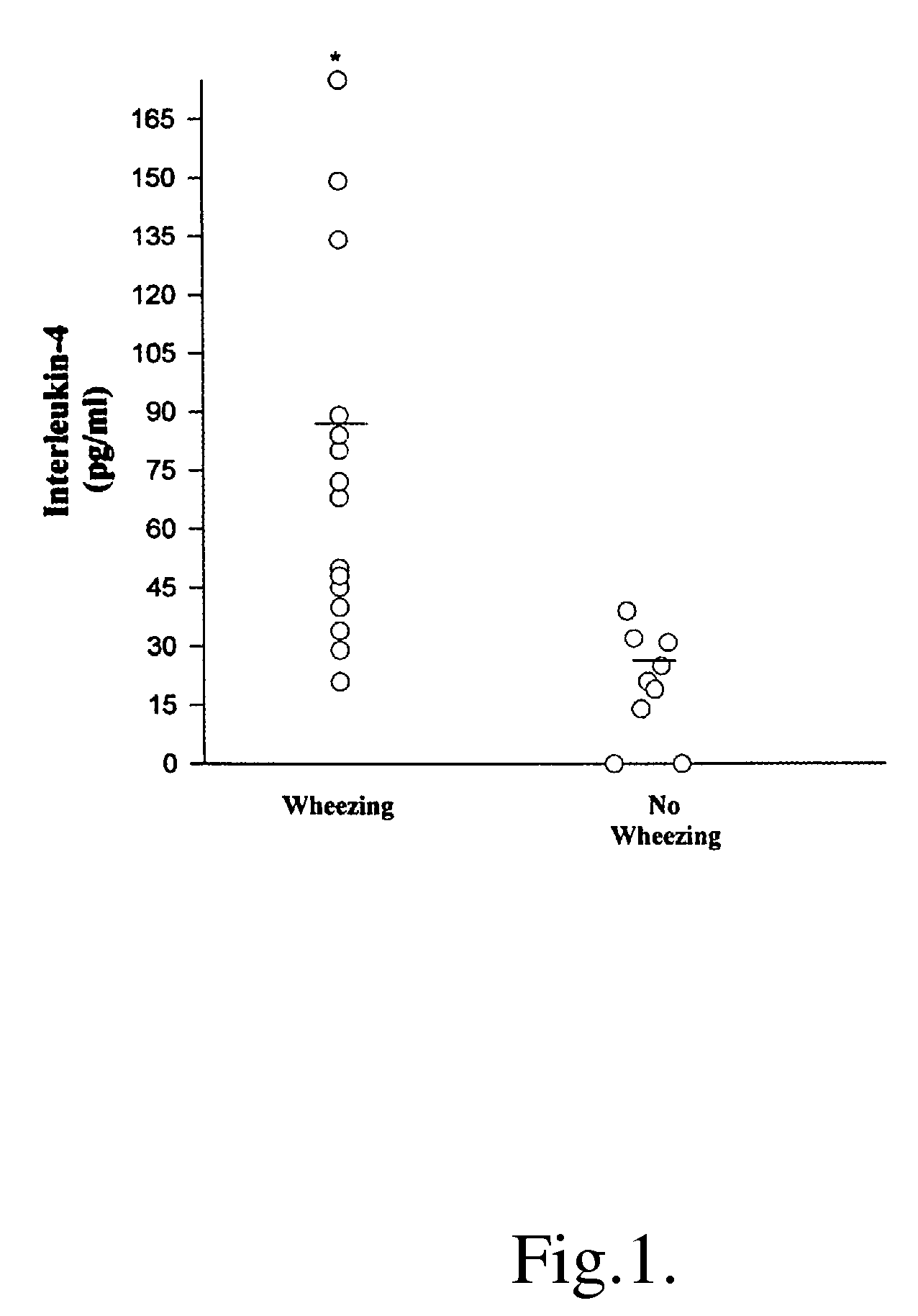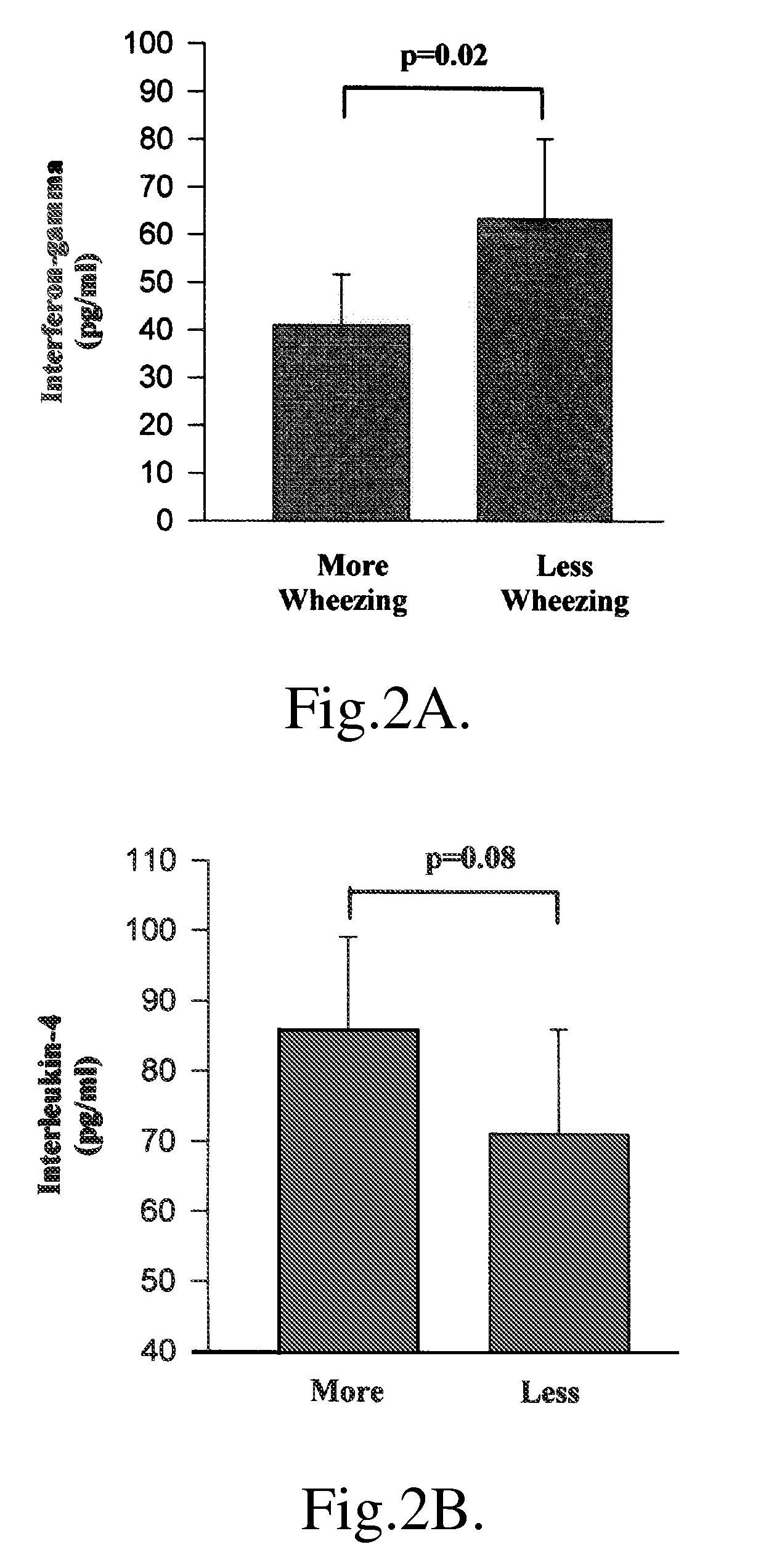Antisense oligonucleotides for treating atopic diseases and neoplastic cell proliferation
a technology of neoplastic cells and antisense oligonucleotides, which is applied in the field of antisense oligonucleotides for treating atopic diseases and neoplastic cell proliferation, can solve the problems of not being shown to be effective in the prevention of allergy or asthma, no studies have been conducted to assess whether antisense oligonucleotides can be employed, and potent immunosuppressive drugs with long-term side effects
- Summary
- Abstract
- Description
- Claims
- Application Information
AI Technical Summary
Benefits of technology
Problems solved by technology
Method used
Image
Examples
example i
EXAMPLE I
Effective Administration of Antisense Oligonucleotides
[0062]In order for any therapy to be effective, the administered substance must first find it's way into the lungs and to the cells where it is to have its effects and second, to remain intact without having any side effects. Antisense oligonucleotides breathed into the lungs, are deposited in the lungs and airways to enter the cells where they have their effects and remain in a non-degraded state for at least 24 hours without affecting lung physiology. One microgram (1 μg) of antisense phosphorothioate oligonucleotide of the present invention that had previously been tagged with FITC was administered by nebulization into the lungs of rats. Rats were anesthetized with urethane (1 g / kg, i.p.). A heating pad was used to maintain body temperature constant during the experiment and rectal temperature was monitored continuously with an electronic thermometer. After blind orotracheal intubation with 6 cm of PE-240 polyethylen...
example ii
EXAMPLE II
Antisense Oligonucleotides Inhibiting the Common Sub-Units of the IL-4 and IL-13 Receptors
[0067]Interleukin-4 is involved in IgE production, the development and persistence of asthma and atopy. Although therapies directed against the effects of IL-4 may be effective in the prevention of asthma, allergy or neoplastic cell proliferation (that depends on this mediator), it has recently been shown that another Th2 cytokine (IL-13) has the same effects as IL-4. Interestingly IL-4 and IL-13 share at least two common sub-units which are necessary for signal transduction of the message to occur.
[0068]Experiments were performed to assess whether antisense oligonucleotides directed against the common sub-units of the IL-4 and IL-13 receptors could inhibit the expression of these receptors. RAJI cells express high levels of IL-4 and IL-13 receptors. These cells were cultured in RPMI 1640 supplemented with 10% heat-inactivated fetal calf serum, penicillin, streptomycin and l-glutamin...
example iii
EXAMPLE III
Antisense Oligonucleotides Inhibiting the Common Beta Sub-Unit of IL-3, IL-5 and GM-CSF Receptors
[0075]Interleukin-3, 5 and GM-CSF are important cytokines that are involved in eosinophil proliferation and survival. These cytokines are increased in asthma and atopic diseases and are also involved in the indefinite proliferation of certain neoplastic diseases. Interestingly, IL-3, IL-5 and GM-CSF share a common beta sub-unit that is involved in signal transduction.
[0076]Experiments were performed to assess whether antisense oligonucleotides of the present invention, directed against the common beta sub-unit of the IL-3, IL-5 and GM-CSF receptor, could inhibit the expression and the function of this receptor. TF-1 and U937 cells express high levels of GM-CSF receptors. In addition, TF-1 cells are dependent on GM-CSF for survival. These cells were cultured in RPMI 1640 supplemented with 10% heat-inactivated fetal calf serum, penicillin, streptomycin and 1-glutamine at 37° C....
PUM
 Login to View More
Login to View More Abstract
Description
Claims
Application Information
 Login to View More
Login to View More - R&D
- Intellectual Property
- Life Sciences
- Materials
- Tech Scout
- Unparalleled Data Quality
- Higher Quality Content
- 60% Fewer Hallucinations
Browse by: Latest US Patents, China's latest patents, Technical Efficacy Thesaurus, Application Domain, Technology Topic, Popular Technical Reports.
© 2025 PatSnap. All rights reserved.Legal|Privacy policy|Modern Slavery Act Transparency Statement|Sitemap|About US| Contact US: help@patsnap.com



